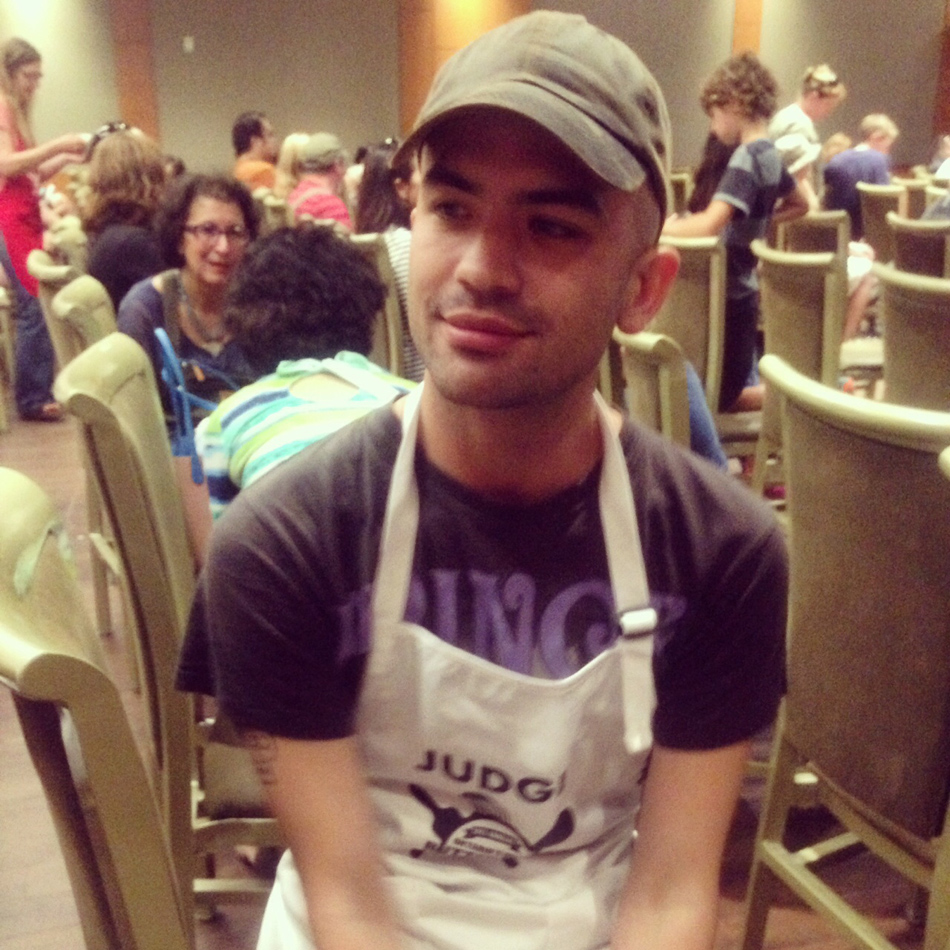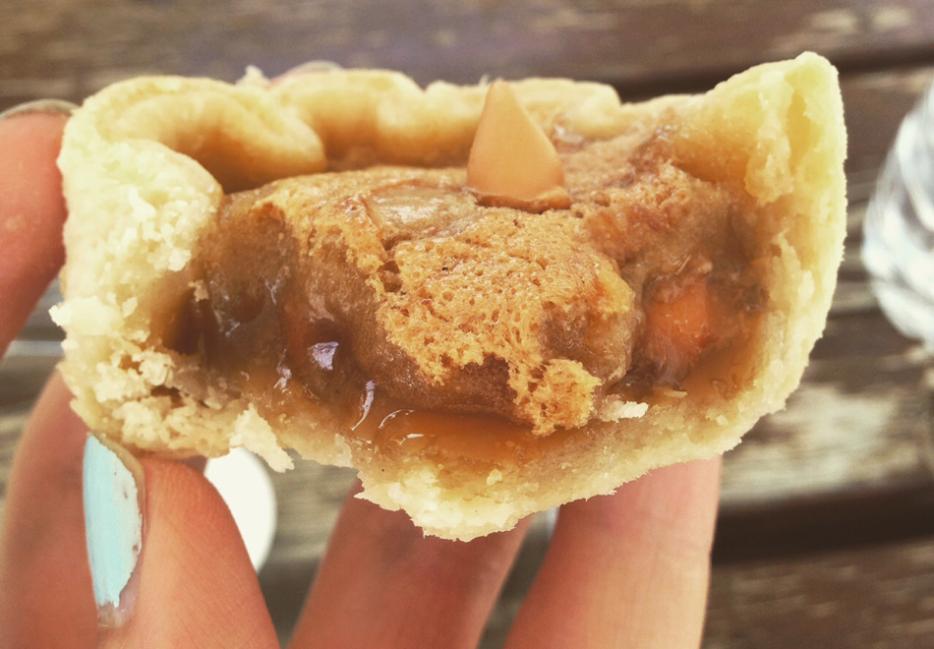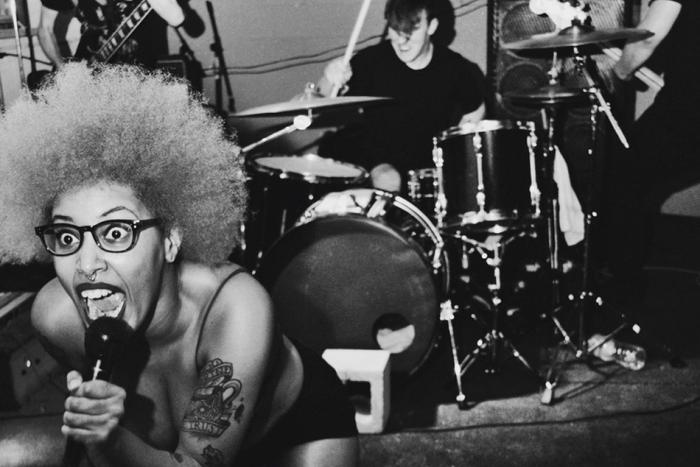The hall was perfumed with syrup and lard. There’s this manner people pick up after eating six or seven butter tarts, a wanly smiling listlessness. They move in trembles and jolts. My body felt like the sack crumpling around a bag of sugar. But degrading, delirious gluttony was what brought us all together. Midland, Ontario’s third annual butter tart festival had drawn nearly 20,000 people, more than the town’s entire population. I was watching celebrity judges work their way through the homemade category at a local cultural centre, or half-watching them, since competitive baking turns out to be light on spectacle. Volunteers brought leftover pastry chunks out to the audience, each sample amending the standard sugar, syrup, butter, and eggs to follow this year’s “freestyle” theme—we had citrus, raspberry coconut, tarts embellished with pumpkin or pecan, another combining chocolate and peanut like a sturdier Reese’s Cup. Midland’s lone drag queen did her rounds, caramelized by bronzer.
There was a debate about the propriety of eating one baker’s little Canadian flags. The artist Jillian Tamaki tried a cherry almond butter tart—very light, nicely browned crust—and called it “classy.” Like me, she was here because of the cartoonist (and Hazlitt contributor) Michael DeForge, who successfully pestered the festival into making him a judge via Twitter: “I am a New York Times bestselling author and the subject of at least one Wikipedia entry. In the time it took me to type out these responses, I ate two and a half butter tarts.” A squad of friends had traveled up from Toronto, including Michael’s publisher Annie Koyama and the other young cartoonists Ginette Lapalme and Patrick Kyle, and eating nothing but desserts left us unable to sit still for longer than three seconds. DeForge wandered over, official duties ended, and peeled the judging smock off his Prince T-shirt. “I feel like I just rubbed grease all over my body,” he said. The sugar coma was descending. “I think I soiled my apron the most.”
DeForge had been running 10 miles a day, but his main form of training was an exhaustive survey of local butter tarts. The @TartQuest Instagram account documented dozens of subtleties in pastry recipe, Michael’s black nail polish posed against golden filling. He captioned one photo: “That a bakery that already offers a perfectly fine regular butter tart would also sell this crumbly, crummy pecan variation reflects a sort of pathology, I think. Reviewed for completion’s sake.” Jillian Tamaki, DeForge’s partner in both food criticism and life, served as the unseen artistic director. Months later he was able to draw a map of Toronto’s tarts, complete with one sad little cartoon tooth. There was something perversely funny about treating desserts like work. Before leaving for Midland I mentioned this adventure to a mutual friend, who laughed that the whole project was “deeply fucking weird.”

I preferred the delicately balanced tart from Grandma’s Beach Treats in Wasaga, with a butterscotch chip rising to its surface. By this point, having eaten something like 4000 calories in butter and sugar, I was just staggering around looking at the tangential distractions of any larger festival. A Ugandan children’s choir performed at one end of the street; the other held a steampunk boutique. Goths craned forlornly away from the sun. We drifted inside an antiques shop called the Crow’s Nest, Midland’s leading retailer for the kind of doll that will murder you in a horror movie. They hung down from the ceiling, limbs rigid, staring at us. Someone said they saw a bat in there once. When Patrick Kyle and Ginette Lapalme disappeared, nobody noticed at first. I began to picture a futile search, the skeptical official queries, and then, weeks later, the two new dolls on sale at the Crow’s Nest, mysteriously and vividly resembling a pair of twentysomething Toronto cartoonists.
Toronto crew only managed to reunite right before the home baker competition, and our sugar-induced madness was slackening into a sluggish tart dependency. The announcer introduced DeForge’s many fellow judges, including a two-time Juno Awards nominee, the Toronto Star’s food editor, and Captain Ed Conroy of the S.S. Keewatin, the world’s last surviving Edwardian steamship, now a floating museum in neighbouring Port McNicoll. He walked onstage wearing full naval uniform and saluted. We limply reached out for their leftover tarts. One used Canadian ice wine; another was based on black forest cake. The “freestyle” theme seemingly made each baker try to create the least traditional recipe imaginable. (“Some of those entries really perfectly incorporated some odd and surprising flavours into their filling,” Michael later emailed me, “but some of the tarts that ranked very highly amongst the other judges just felt like pastries that happened to look like butter tarts.”) When we were passed a tart with peanut butter, banana, and bacon, somebody said “I can’t do this.” It ended up winning the whole category.
I couldn’t talk to the triumphant baker Hisako Niimi at that moment, because another judge started leading the room in a butter-tarts-themed rendition of “Sweet Caroline,” but I eventually got a chance to ask her about herself. She wrote back: “When I withdrew from the joint management of [her Ottawa bakery] in March, six years had already passed since I arrived to Canada. I lost the store and I lost the boyfriend with whom I had a long-term relationship … At the same time, I found by chance the website for the Best Butter Tarts Festival in Midland. I thought I should challenge this contest! One of my flavors was Elvis Presley’s favorite combination: peanut butter banana bacon. I thought natural sweetness from banana, strong peanut butter flavor and salted crispy bacon would make a nice taste and crunchy texture that would suit butter tarts. I also wanted to make this flavor successful for Elvis Presley’s honor.” Niimi added: “Unfortunately, I have never had any family recipe for butter tarts. So I decided to create butter tarts to my taste instead of going the traditional way.”
The next morning, I rode back to Toronto with Michael, Jillian, Patrick, and Ginette. We listened to Bjork the whole way down: It takes courage to enjoy it / The hardcore and the gentle. Changing lanes, Jillian turned to Michael and joked: “Are you done appropriating white culture now?” When we reached the city again, she handed me a single Timbit with the manner of someone giving methadone to a heroin addict. The thing was, I really couldn’t stop eating butter tarts. I went searching at the perplexingly expensive Pusateri’s grocery store a few days later. They carry this Bakerberry tart marbled black and white, Belgian chocolate infusing the cakey pastry, like a gourmet Crème Egg. I got a block away from the store before tearing apart its little paper box. The filling was overwhelming, a sumptuous richness turning bitter at the edges. I thought it might linger on my lips forever.






